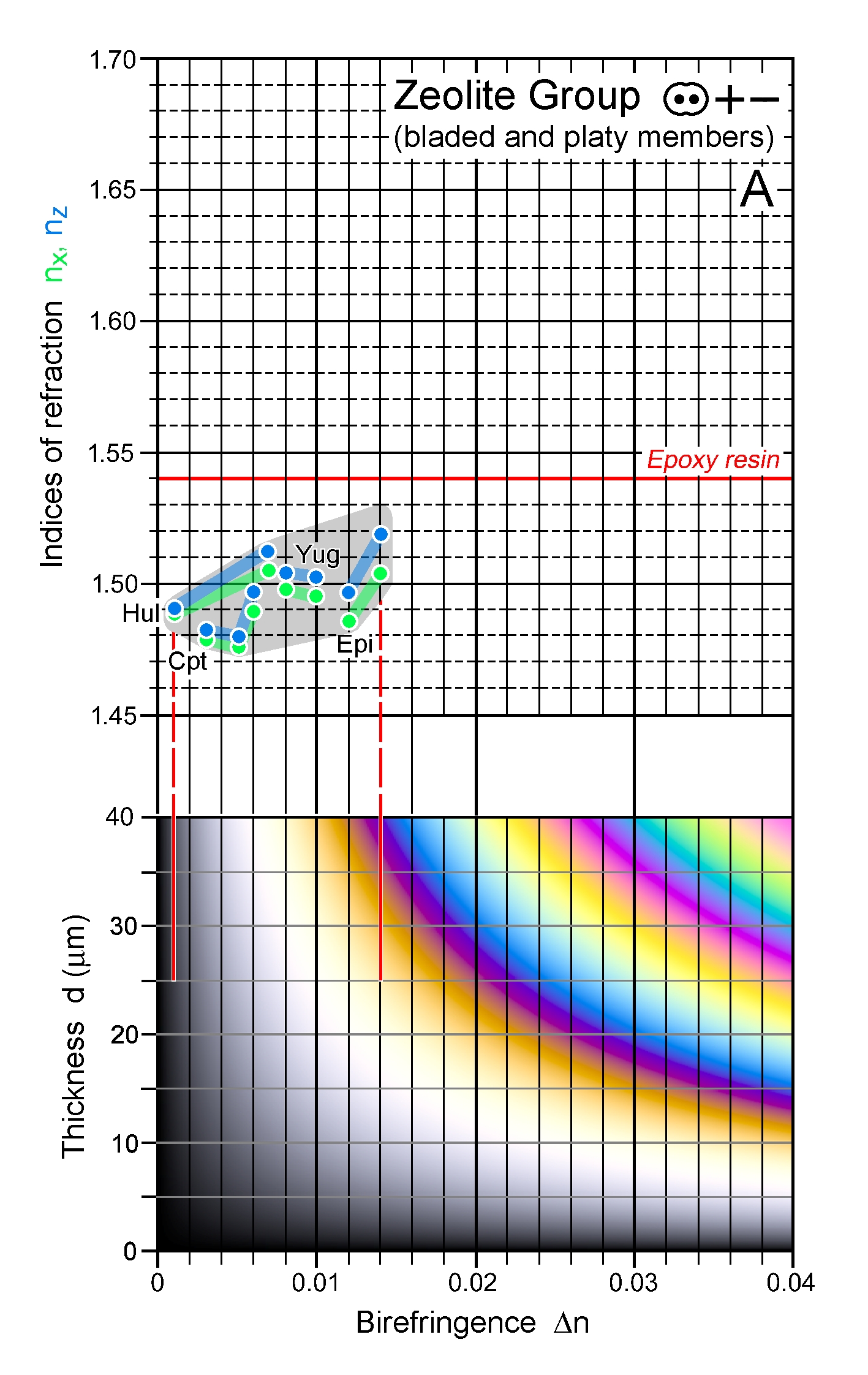|
| Formula | (Ca,Na2)3Al6Si18O48 ∙ 16H2O |
| | Optic class & sign | Biaxial negative |
| | Optical orientation | X near a, Y = b, Z near c |
| | Optical plane | (010) |
| | Relief | Moderate- to low-negative |
| | Refractive indices | nx = 1.485 -1.505
|
|
ny = 1.497 -1.515
|
|
nz = 1.497 -1.519
|
|
| |
| | Birefringence (max.) | 0.012 - 0.014 |
| | | |
| | Optic Angle
| 2Vx
= 45° - |
| | 2Vz
|
| | Sign of elongation | Length-slow, l (+) |
| | Interference figure | |
| | Colour / pleochroism | Colourless |
| | Zoning | - |
|
|
| Form | Habit | Elongate-prismatic, commonly arranged in in radiating aggregates (spherulites or sheaf-like bundles) |
| | | Surface | |
| | Cleavage | {010} |
| | Twinning | Contact twins on {100} generally present, causing orthorhombic appearance; penetration twins on {110} |
| | Extinction | Inclined in randomly oriented prismatic sections; symmetrical to traces of {110} faces and straight to cleavage traces in sections ⊥ c |
|
|
| Reaction textures | |
| | Alteration / decomposition | |
|
|
| Occurence | Ign | |
| | | Met | Very-low-grade metamorphic basalt and tuff |
| | | Sed | |
| | | Hyd | Cavities and fractures in basalt and andesite; late-stage hydrothermal alteration of granites and pegmatites |
| | | Other | |
|
|
| Distinctive properties | Relatively rare zeolite; very low n, upper first-order interference colours, twinning and pseudo-orthorhombic appearance |
| | Additional comments | n-Δn charts A, B: Bre - brewsterite, Cpt - clinoptilolite, Epi - epistilbite, Hul - heulandite,
Lev - levyne, Stb - stilbite, Yug - yugawaralite |
|
|

 Images
Images 



 Images
Images 

